Introduction
Before I get into the specifics of my quarter steer story, here’s some background.
I love beef. The heartiness. The meatiness. The warmth. The fat. The feeling of satisfaction after eating it. The high nutrient concentrations. I love it. There is a reason it’s so freaking popular. Problem is, when beef is raised unnaturally (think feedlots, antibiotics, tearing down rainforests for pasture, etc), it can be a devastating force on the natural world around us. I don’t debate that can be the case. That’s not always, true, however.
I have read articles written by intelligent people (like Diana Rodgers, RD, of sustainabledish.com) how some of the numbers you hear about when it comes to beef production are often out of context, and likely overestimates (this one (Meat is Magnificent) and this one (How Much Feed Does it Take to Produce a Pound of Beef?) are best). Beef, in essence, is not the villain it’s made out to be. It’s certain practices (which are popular), that are problematic. The worst cases of it’s production are bad, yes, but that’s true for lots of food, grains and other plants included. There’s another side to the beef story. Heck, there’s an entire institute called the Savory Institute that is devoted to teaching the world how planned holistic grazing of cattle on natural grasslands can reverse desertification (a major problem) and regenerate the land, and even be a carbon sink. Another great article about how properly managed cattle can be beneficial for the land, if you’re not already convinced, was written by Sheldon Frith called: Letter to a Vegetarian Nation (recently turned into a book that I plan on reading in 2017).
This post, however, isn’t about whether we should or shouldn’t eat beef. I’ve already explained why I eat animals, and how I prefer to source them. This post is about how to economically procure beef from a local farmer who is doing things right (or, as close as they can). Recently, I published a detailed post on how I procured a half pig order from Gelderman Farms. That pork was awesome  This time around, I have documented my order of a quarter-steer from Hooke Farms, in the South Cariboo Region of BC. Posts of this variety are to make it very clear what the process is for ordering from farmers directly, and also exactly what you’ll get for your efforts.
This time around, I have documented my order of a quarter-steer from Hooke Farms, in the South Cariboo Region of BC. Posts of this variety are to make it very clear what the process is for ordering from farmers directly, and also exactly what you’ll get for your efforts.
Oh, and a “steer”, if you didn’t already know, is a male bovine that has been castrated (snip, snip, or what have you).
First up, why Hooke Farms?
EDIT: For others, if you don’t have a farmer in mind, I recommend searching on eatwild.com or the Canadian version (Google this), and contacting farmers directly through that.
Hooke Farms
This one was pretty simple. During 2012, when I just moved to Vancouver, I was vocal about trying to find a farmer I could purchase grass-fed beef from directly as I had in Ottawa. There was a quick friend of a friend connection that lead to me purchasing my first quarter cow from Linda Manning, owner and principal operator of Hooke Farms. Her marketing was simple – just a document that explained how she raised the beef. I was happy with it. From her website, the description is as follows:
Hooke Farms produces outstanding quality beef on the hard , protein -rich grasses of the Interior Plateau of British Columbia. Our Angus-cross steers are raised naturally without growth hormones, antibiotics or any synthetic feeds beyond grass. They are processed at approximately 20 months of age in a government-inspected facility which prides itself on excellent butchering. The beef is dry-aged for at least 21 days.
Grass-fed beef has the following benefits:
- lower in total fat
- higher in beta-carotene
- higher in Vitamin E
- higher in B vitamins and riboflavin
- higher in the minerals calcium, magnesium, and potassium
- higher in total Omega 3s
- a healthier ratio of Omega 3 to Omega 6 fats (1.54 vs. 4.85)
- higher in conjugated linoleid acid (CLA), a potential cancer fighter
We sell by the side, by the quarter and by individual cuts. Order lists are available in October of each year. Orders are filled on a first-come, first served basis and we are generally sold out by late October. Beef is delivered at no charge to Vancouver and to Kamloops area clients once or twice per Fall or orders can be shipped prepaid via Greyhound.
Here’s an image Linda sent me:
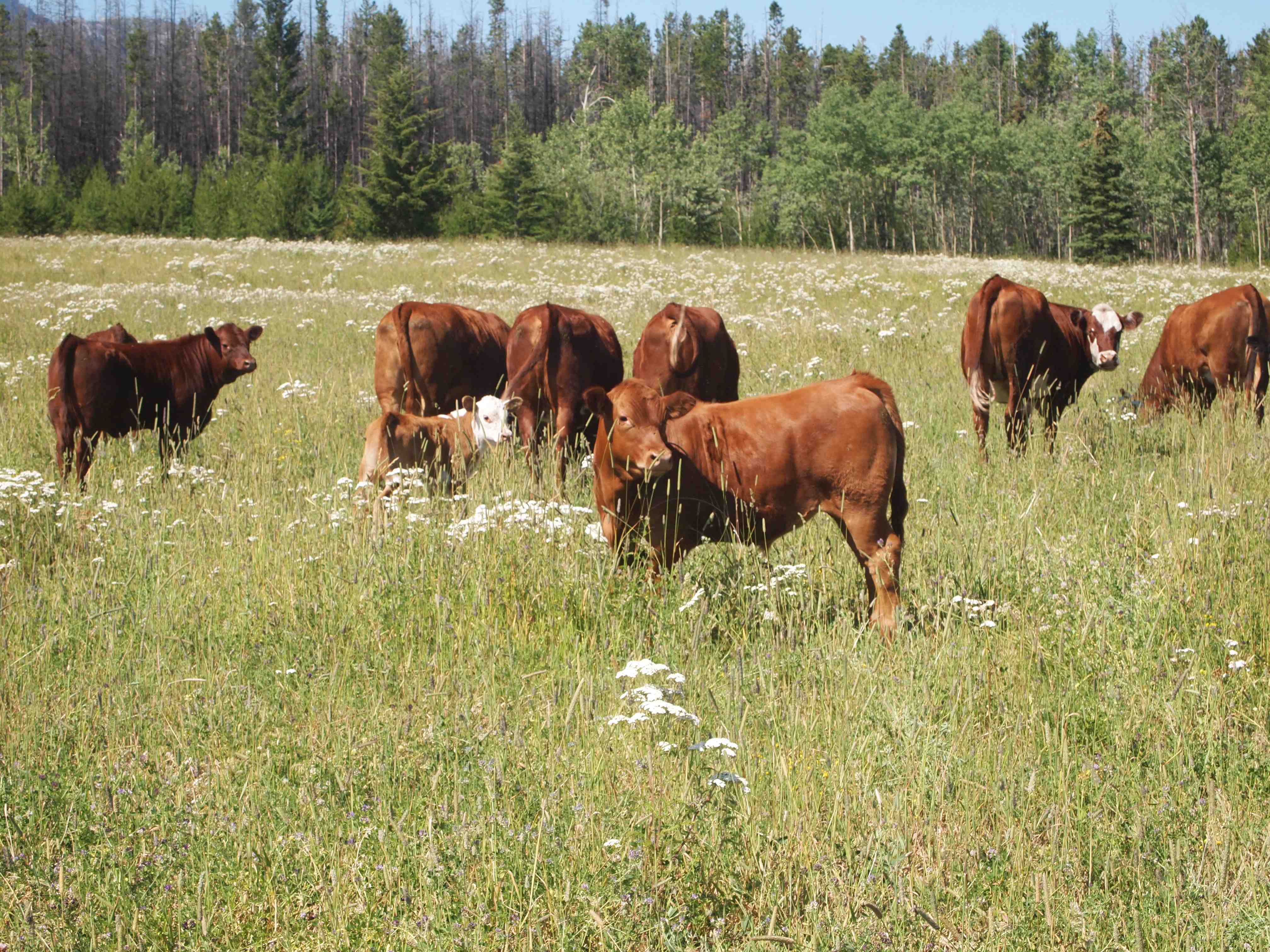
So, I put in an order! I’ve done that every year since 2012, so I suppose this one in particular was my fifth order (2016). Linda maintains a list of who orders from her for the next year, so you get a heads up that orders are being taken. Orders are only taken once a year in October after a season of eating grass. I seem to recall there being a bit of grain-feeding (organic oats and barley) at the end of the season just to firm up the meat, but it’s only for a little flavour. These steers are 99.5% grass-fed, and I can tell you, they are delicious. She also grows and sells garlic, which is also great.
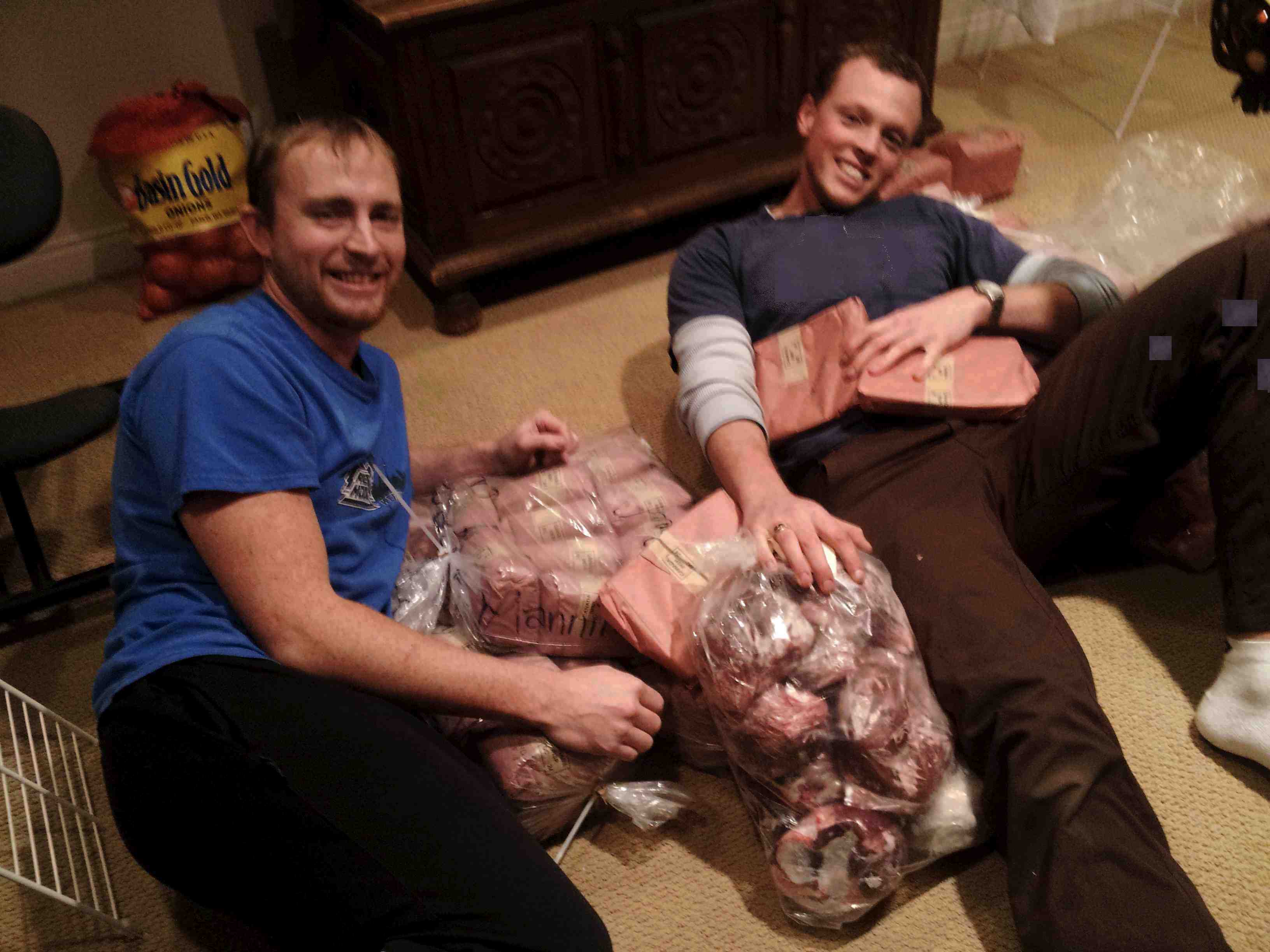
Since then, I’ve formed a bit of a mutually beneficial relationship with Linda. I highly encourage people to meet their farmers, and not just for beef (although let’s be honest, that is an important one!). You can learn a lot from a farmer, and get information on where to find the good stuff, and sometimes special deals.
Anyways, on to the process.
The Process of Receiving the Quarter Steer
After you send in your order, there’s an email confirmation from Linda. Then, at some point, she emails to let you know that it’s time to fill out your cutting instructions sheet, which you email back to her. It looks like the image below. And yes, I did get the organ pack. That stuff contains among the highest concentrations in nutrients available! The bones just make a delicious stock high in collagen proteins, which are awesome for your skin (and connective tissue in general).
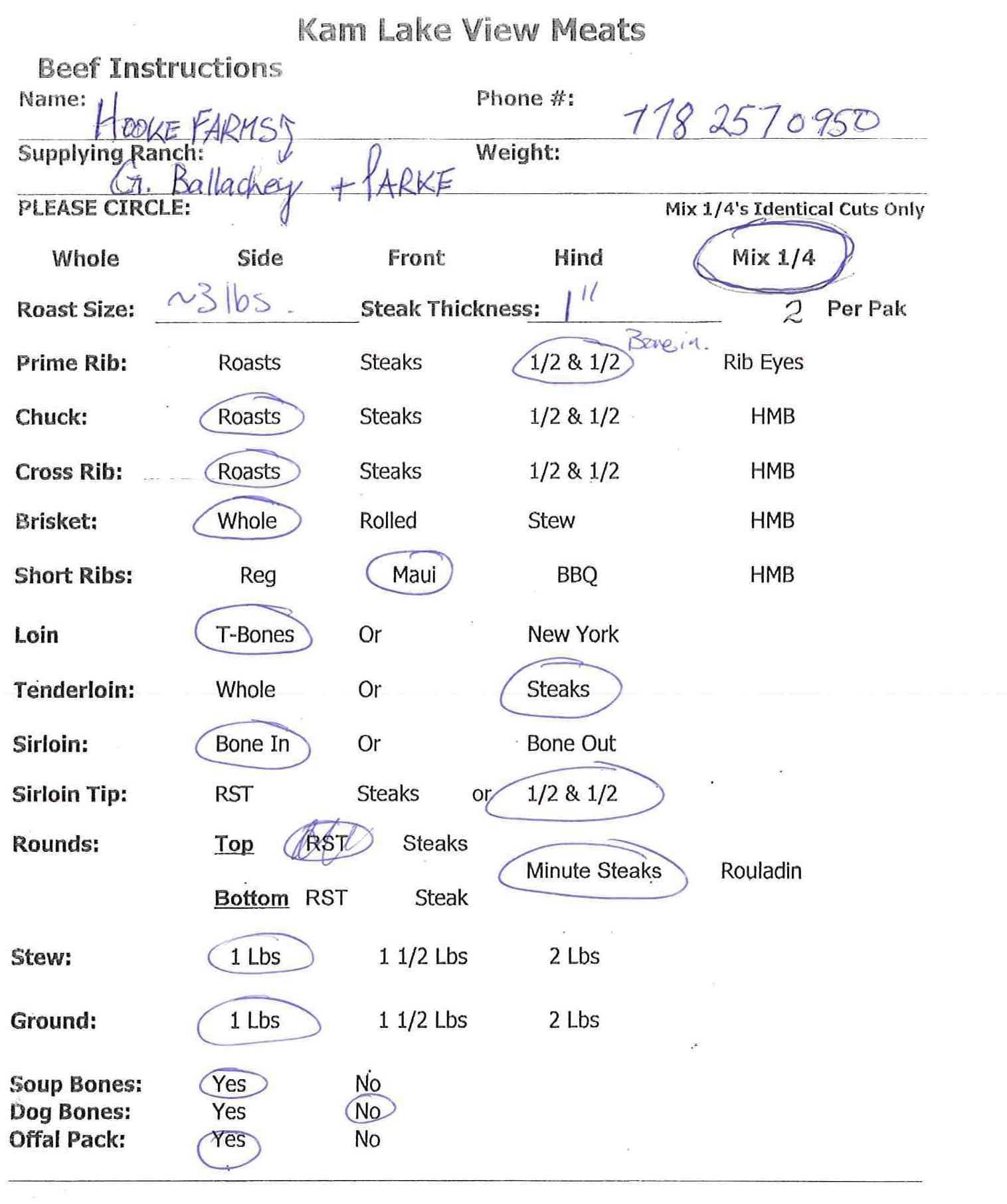
 I learn every time.
I learn every time.After that, I waited a few weeks, and got an email from Linda with an invoice attached saying that she’d be at her house in North Vancouver on Saturday, and I went and picked it up then. I’d say the hardest part of the whole process was getting my act together on the Saturday to show up to get the beef. I actually picked up beef for three other orders as well because they couldn’t make it. What can I say? People know me as the “beef guy”. So, similar to my half pig order experience, the distribution was the hardest part, but oh so worth it.
Exactly what I paid and got in my Quarter Steer Order:
I got what’s called a “Mixed Quarter”, which means that it has cuts from both the front and back of the steer. This is a good thing! You get rib cuts AND sirloin. Chuck AND round. Here’s the image from the top of the article again for reference:
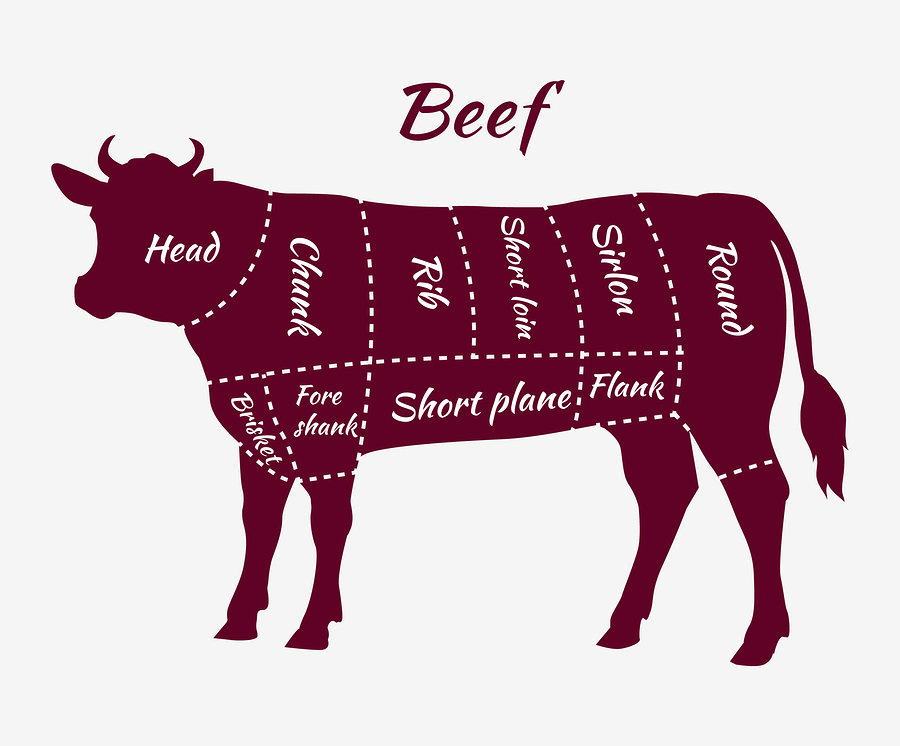
Here’s the invoice that I got from Linda, where it should be noted that she charges by cut weight, which is different from hanging weight. Hanging weight is when the carcass is hanging, which is much heavier than when it’s all cut and trimmed. Keep this in mind when comparing prices to other farmers.
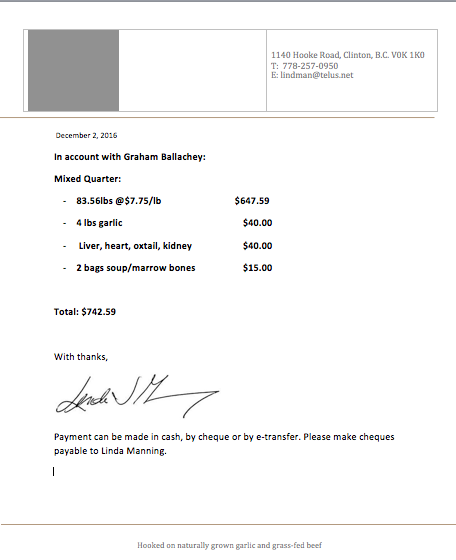
So, I went to her lovely home on Saturday, and picked up my order (among others, haha). I went home and put it away in my 3.6 cubic foot freezer, where it fit NO PROBLEM (Note: it’s about 30 pounds of beef per cubic foot, so 3.6 cubic feet was plenty).
Before I put it away, I took a photo of the bounty:
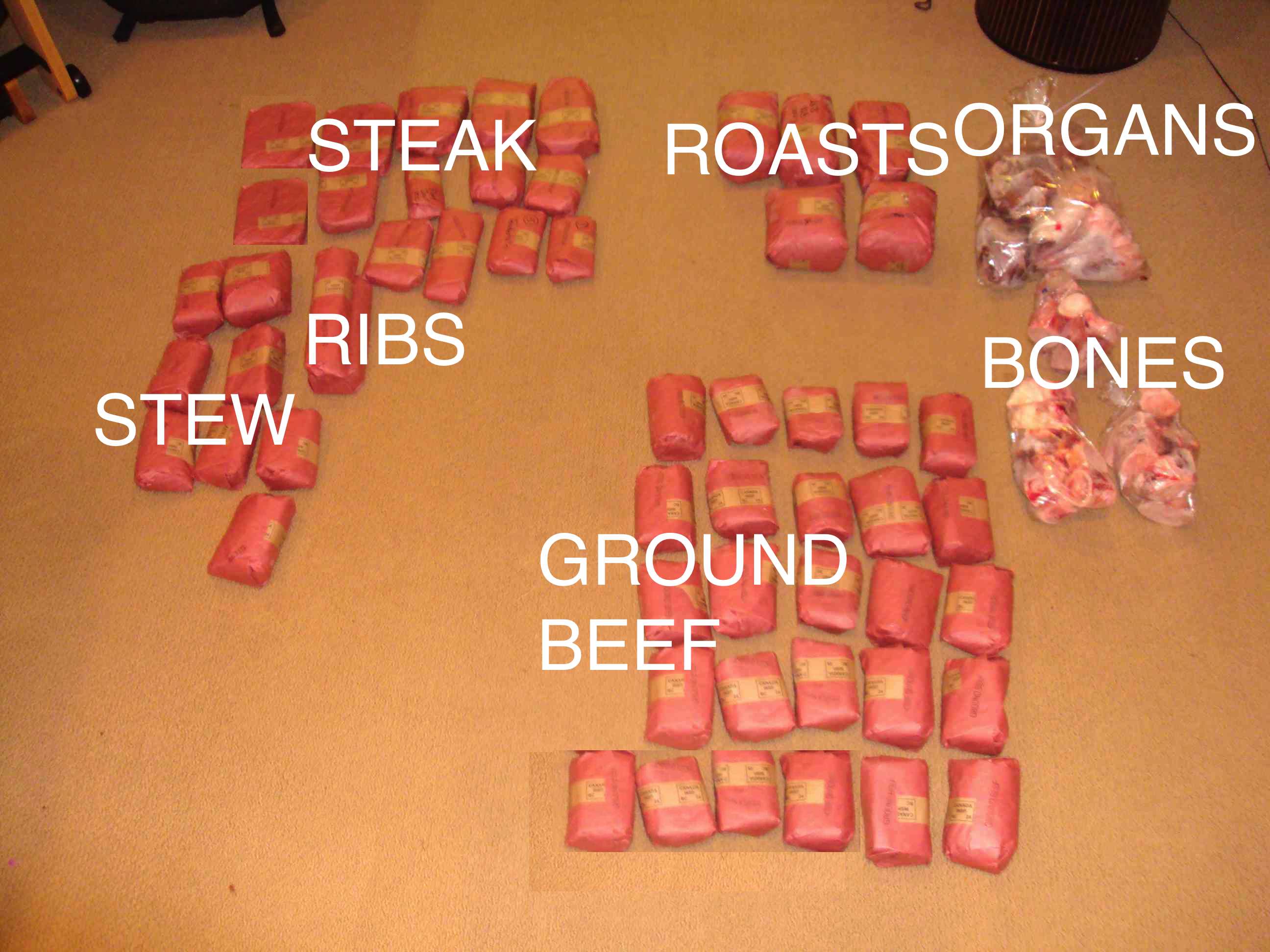
It looks like a lot of beef, but it all fit easily in this freezer:
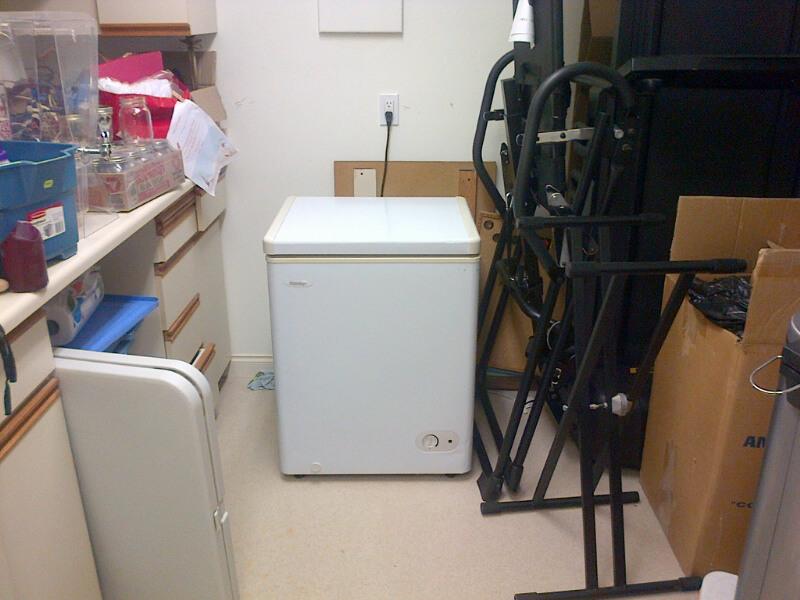
Here’s a shot of what the freezer looks like inside:
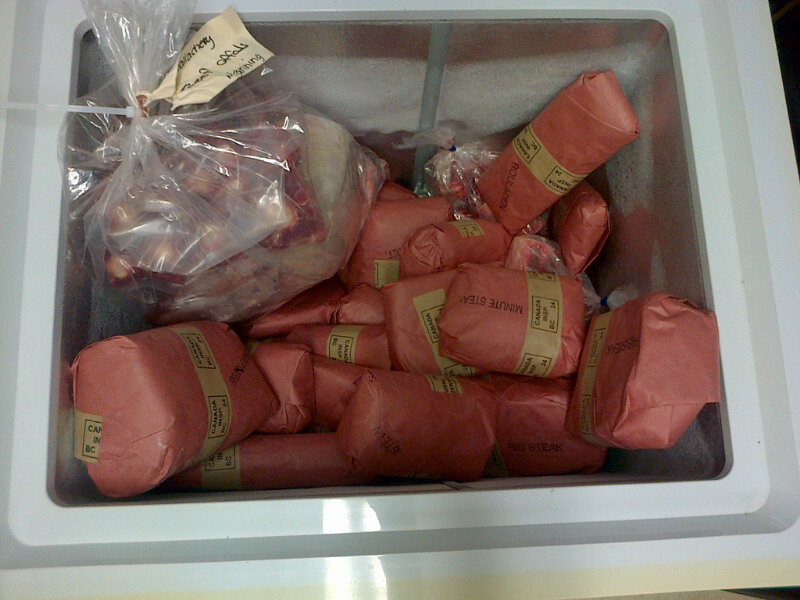
I have even tabulated the exact breakdown of the order, which is in the two tables below. NOTE 1: how you ask for things cut will alter this somewhat, i.e.: you can have certain things ground up, or left as a roast/steak, or cubed for stew, or what have you. This is just what I ordered. NOTE 2: I didn’t have a decent food scale when I was measuring all this, so aside from the ground beef and stew, it’s an estimate. I did my best 
| Meat type: | Pounds | Kilograms |
|---|---|---|
| Total | 110.5 | 50.2 |
| Ground | 26 | 11.8 |
| Stew | 7 | 3.18 |
| Steak (inc tenderloin) | 22 | 10 |
| Roasts (inc brisket) | 24.5 | 11.1 |
| Ribs | 4 | 1.82 |
| Total (no extras) | 83.5 | 37.9 |
| Organs (offal) | 15 | 6.81 |
| Bones | 12 | 5.45 |
Broken down even further:
| Cut | # of Packages | Total pounds | Total kilograms |
|---|---|---|---|
| Total: | 59 | 110.5 | 50.2 |
| Ground beef | 26 | 26 | 11.8 |
| Stewing beef | 7 | 7 | 3.18 |
| Maui ribs | 2 | 4 | 1.82 |
| Brisket | 1 | 2.5 | 1.14 |
| T-bone | 3 | 6 | 2.72 |
| Rib steak | 2 | 4 | 1.82 |
| Minute steak | 3 | 6 | 2.72 |
| Flat iron steak | 1 | 1 | 0.45 |
| Sirloin steak | 3 | 3 | 1.36 |
| Rouladen | 1 | 1 | 0.45 |
| Tenderloin | 1 | 1 | 0.45 |
| Sirloin roast | 1 | 4 | 1.82 |
| Cross rib roast | 1 | 5 | 2.27 |
| Prime rib roast | 1 | 5 | 2.27 |
| Top round roast | 1 | 4 | 1.82 |
| Chuck steak roast | 1 | 4 | 1.82 |
| Total w/o extras: | 55 | 83.5 | 37.9 |
| Organ pack - heart, liver, kidney, oxtail | 1 (packed separately) | 15 | 6.81 |
| Bones | 3 | 12 | 5.45 |
A Note on the Economics of the Quarter Steer:
You save money too! I paid $7.75/lb cut weight for the beef, and this was over half steaks and roasts. In a butcher shop, grass fed ground beef goes for $6-10/lb, which is about on par, but roasts and steaks go for much higher! I’ve seen grass-fed tenderloin go for $30/lb in some butcher shops, and t-bones can go for $25/lb, and you get it all for $7.75/lb.
As a quick estimate of savings, let’s imagine that we can get ground and stew beef for $8/lb in a butcher shop (so essentially no savings), but the roasts and steaks average $15/lb (which is conservative, it’s probably more).
By my calculations, on the 46.5 lbs of roasts and steaks that I got, I saved about $335. Not bad! And hey, I broke even on the ground beef and stew, and supported a farmer directly. Plus, just having all that stuff in your freezer all the time is really convenient (for me). It’s just less shopping.
OK – that was my quarter steer order! I highly encourage other beef eaters to do something similar.
Readers – any tips on beef buys? Other animals? Please let us know in the comments section.
– Graham
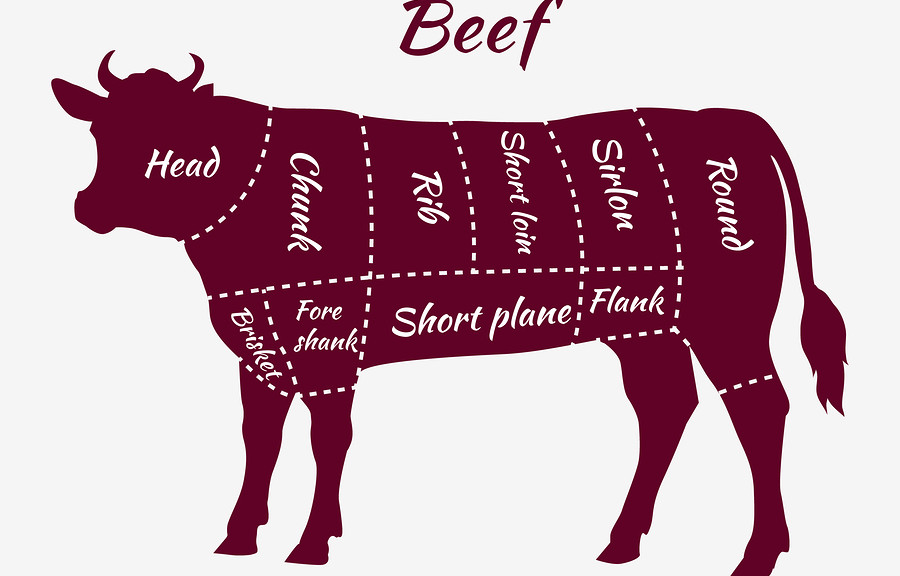
Cool thanks. Been looking into this and just ordered a pig for myself. Think I’ll upgrade the freezer now. Appreciated the write ups
Right on! Thanks for reading and commenting.
Did the cow and the pig both fit in your 3.6 danby freezer?
Hi Kwoks,
Thanks for the question! The answer is no – I had them in there at separate times. I’m already done with the half pig, so now it’s full of beef.
I reckon for both, you’d need at least 5.5 cubic feet, and maybe 6.The two orders were roughly the same size (half pig and quarter steer).
Thanks!
Graham